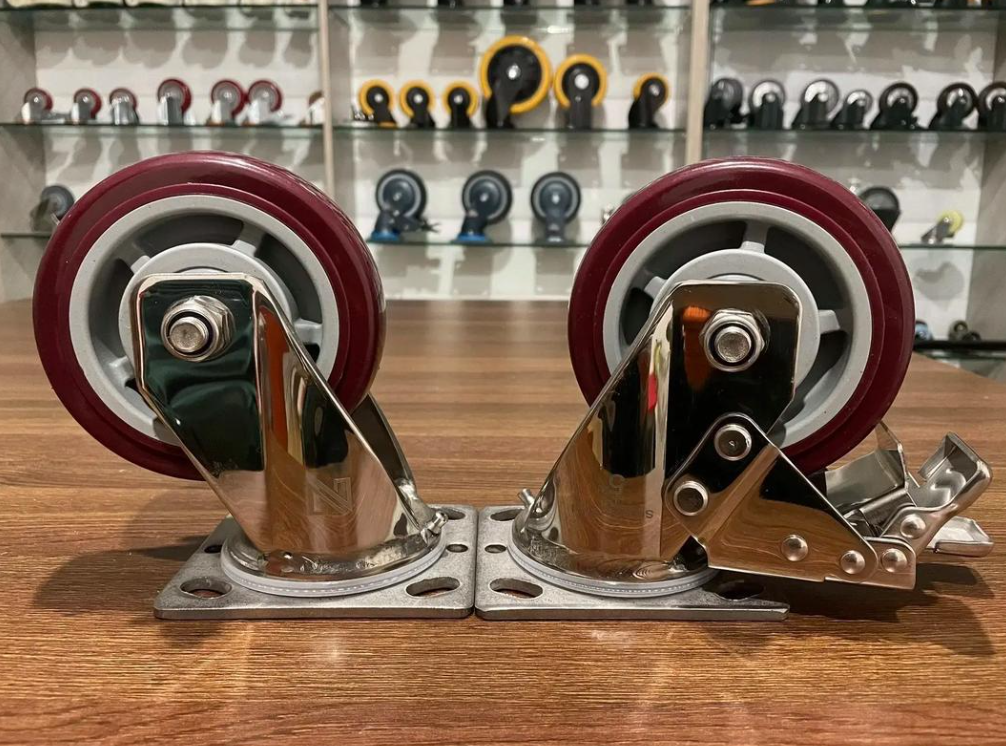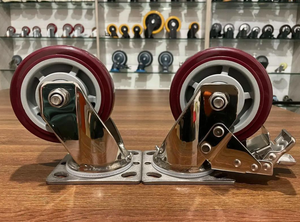
Universal Wheel Inspection Method and Standard Guidelines Inspection, Audit and Certification Services for Warehousing and Factory Inspection
The swivel wheel is an adjustable castor that can rotate horizontally by 360 degrees. Together with the fixed castor, it constitutes the basic component of various equipment moving systems. Its quality directly affects the mobility, load-bearing safety and service life of equipment such as carts and shelves. To ensure that the swivel wheel products meet industry standards and customer requirements, a systematic inspection process and factory inspection review mechanism must be established. This article will, based on the structural characteristics of the swivel wheel, introduce in detail its classification, inspection items, inspection standards and quality control key points, providing practical guidelines for quality inspectors, purchasers and manufacturers.
I. Classification and Usage Specifications of Universal Wheels
(1) Structural Types
Ordinary Universal Wheel: Composed of a wheel frame, a wheel axle, bearings and a tire, capable of supporting full rotation.
Heavy-duty universal wheels (such as 203mm specification): Equipped with reinforced brackets and roller structure, suitable for logistics equipment and industrial vehicles.
Anti-tangle Universal Wheels: Install protective covers to prevent debris such as wires and ropes from getting caught and hindering rotation.
Brake swivel wheels: Equipped with directional locking or full braking function, enhancing the stability of the equipment.
(2) Installation and Usage Requirements
The casters must be installed at the designated positions as per the manufacturer's design specifications.
The support should have sufficient strength and meet the rated load standard.
Ensure that the wheel shaft is vertical. When using the wheels in combination with the swivel wheels, the axis lines must be aligned.
The casters used for the same equipment should be compatible with each other to avoid any imbalance during movement.
II. Inspection Standards and Inspection Procedures for Universal Wheels
(1) Main Basis
GB/T 2828.1-2003 Sampling Procedures and Criteria for Judgement
ISO 22883 Test for Fatigue Performance and Dynamic Load of Wheel Axes
Enterprise technical specifications and special requirements of purchase orders
(2) Key Points of Factory Audit Quality Management System
Check whether the organization has obtained the ISO 9001 quality system certification.
Review of incoming material inspection (IQC), production process control (IPQC) and finished product inspection (FQC) records
Materials and Process Control
The material of the wheels (nylon, polyurethane, rubber, etc.) must provide a material certificate.
The thickness of the support, galvanizing for rust prevention, and welding quality should comply with the specifications.
Calibration of testing equipment
The load testing machine, hardness tester and wear resistance tester need to be calibrated regularly and records should be kept.
III. Finished Product Inspection Items and Methods
1. Appearance Quality Inspection
Tire surface: No cracks, deformations, or impurities embedded; uniform color with no color difference
Supporting frame and solder joints: No burrs, rust, or incomplete soldering. The surface treatment is in good condition.
Identification is clear: Specifications, load capacity, and manufacturer information should be clearly distinguishable.
2. Dimensions and fit accuracy
Measure key dimensions such as wheel diameter, wheel width, and installation hole spacing using a caliper.
Check whether the bearing and the axle are tightly fitted, without any shaking or sticking.
3. Performance Testing Items
Load Capacity Test: Conduct a static pressure test at 150% of the rated load and maintain it for 1 hour without any deformation.
Rotational flexibility: In the unloaded state, it should rotate smoothly without any abnormal noise.
Wear resistance test: Conduct a reciprocating rolling test on the standard road surface and measure the tire wear amount.
Impact test: Simulates drops and obstacle collisions to test the structural strength of the support.
Fatigue life test: Simulate actual operating conditions and conduct over 10,000 cycles of rotational tests.
4. Reliability Assessment
High/low temperature environment test: Verify the material performance and rotational effect under extreme temperatures
Chemical resistance test: For specific industrial environments, this test assesses the tire's ability to resist oil, acid and alkali.
IV. Sampling Plan and Decision Rules
Sampling Standard: Follow GB/T 2828.1. Generally, the general inspection level II is adopted, and the AQL values are set as follows: Critical 0, Major 1.5, Minor 4.0
Single-item determination: If any key item (such as load, rotating structure) is found to be non-compliant, the entire item is classified as non-conforming.
Quality inspection result: Based on the sampling results and the AQL standard, it is determined whether to accept or reject, and corresponding labels are affixed.
V. Packaging, Labeling and Document Requirements
Packaging Specifications
Each set of swivel wheels should be packaged separately to prevent them from being damaged by collisions during transportation.
The outer box should be marked with the product model, quantity, gross weight and moisture-proof symbol.
Document review
Material report, load test report and certificate of conformity are required.
The shipment inspection report should include the sample size, defect statistics and rectification suggestions.
Traceability system
The product batch number and production date should be traceable back to the raw material and process records.
VI. Common Problems and Improvement Suggestions
Typical defects: Tire detaching, bearing jamming, frame cracking, brake failure
Preventive measures: Strengthening welding process control, regularly replacing tire molds, and improving load testing before leaving the factory.
Factory inspection improvement points: It is suggested to introduce SPC (Statistical Process Control) and set up quality control points at key workstations.
Summary
Although the universal wheels are small components, they directly affect the mobility and safety of the entire equipment. By strictly conducting inspections on appearance, size, load capacity and durability, combined with a sound factory inspection system and quality control process, the product qualification rate and market competitiveness can be significantly improved. It is recommended that purchasers clarify the technical standards before placing orders, conduct interim inspections during production, and perform final inspections before shipment. They should also establish a long-term quality improvement mechanism with the suppliers.
Share this product

Universal Wheel Inspection Method and Standard Guidelines Inspection,
To ensure that the products meet the industry standards and customer requirements, a systematic inspection process must be established.
